Hubble’s bubble illuminates the interstellar rubble

A shining bauble among a diffuse cloud of stellar debris has a tremendously interesting physics story behind it.
“Truth is tough. It will not break, like a bubble, at a touch; nay, you may kick it about all day like a football, and it will be round and full at evening.” –Oliver Wendell Holmes
From 7,100 light years away, the Bubble Nebula is one of the most clearly identifiable deep-sky objects of all.
https://players.brightcove.net/2097119709001/4kXWOFbfYx_default/index.html?videoId=5074695060001
Instead of matter blown off from a dying star, this structure arises from a massive, young and incredibly luminous star shining in a dense, matter-rich region of space.
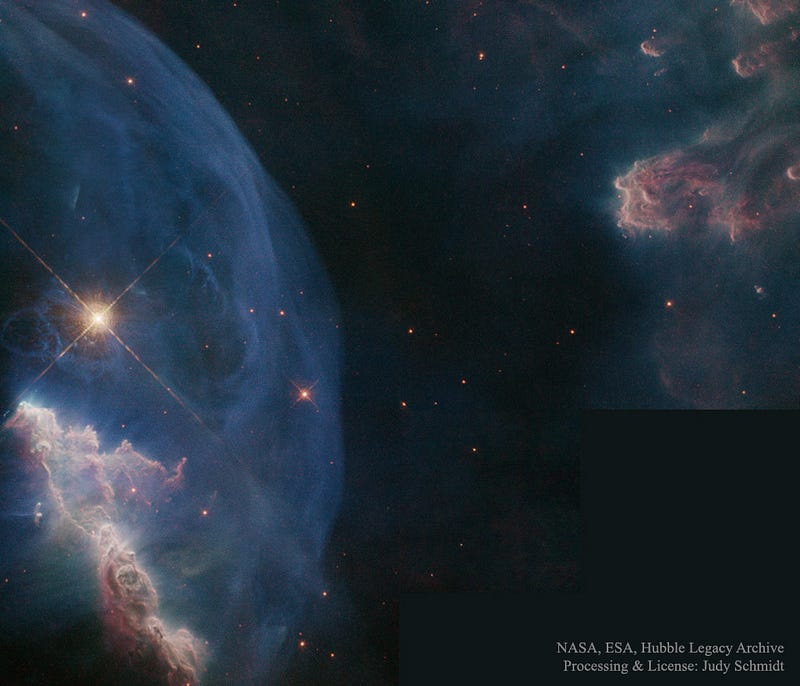
Molecular clouds are where new stars often form, in groups or in isolation, and the Bubble Nebula is deep inside exactly one such region.
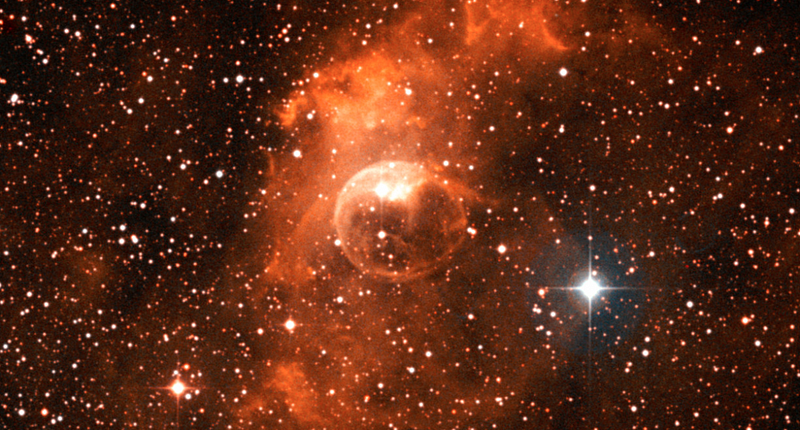
Powering the Bubble is the massive O-class star BD+60 2522, which burns with a temperature of 37,500 K and a luminosity nearly 400,000 times that of our Sun.
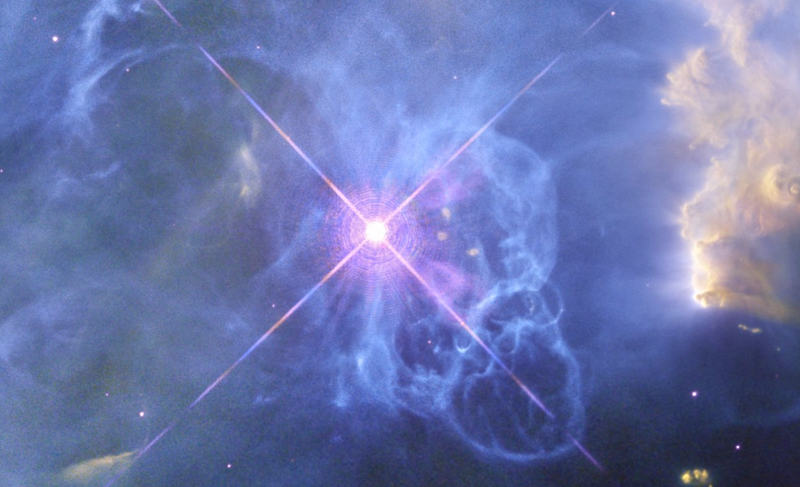
The star is off-center from the Bubble’s center due to the fact that the interstellar medium is denser on the “short” side, making it more difficult to push matter out in that location.
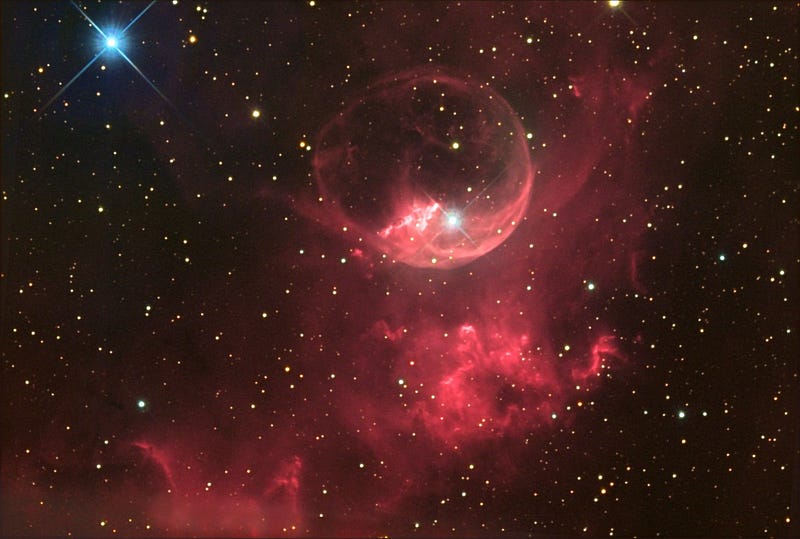
Emitting stellar winds at approximately 1,700 km/s, or 0.6% the speed of light, is how the bubble is created at all.
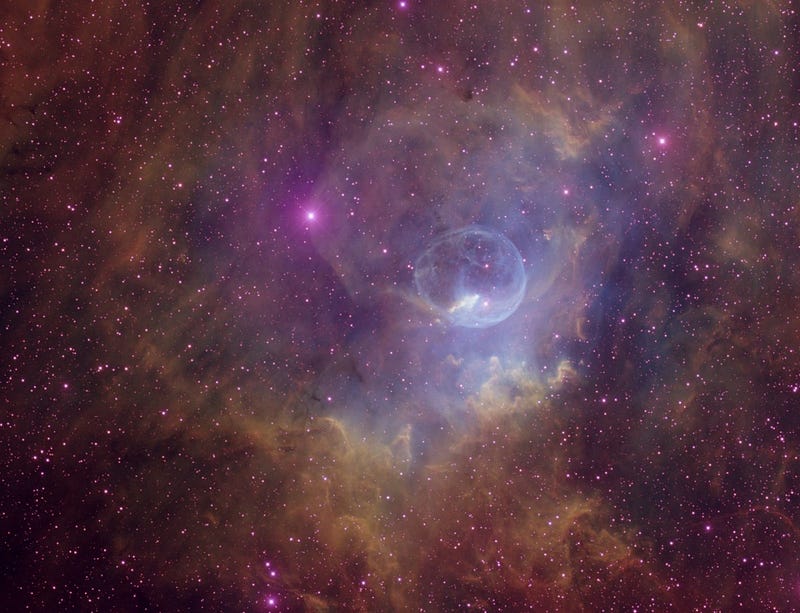
The blue color comes from partially ionized oxygen atoms, while the cooler yellow color highlights hydrogen (red) and nitrogen (green).

In 10 million years, this helium-burning star will finally go supernova, creating a different type of spectacular light show.
Mostly Mute Monday tells the story of a single astronomical phenomenon or object in visuals, images and video in no more than 200 words.
This post first appeared at Forbes, and is brought to you ad-free by our Patreon supporters. Comment on our forum, & buy our first book: Beyond The Galaxy!





